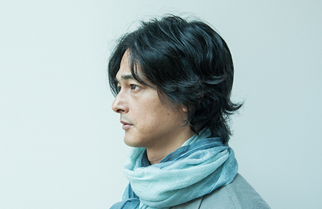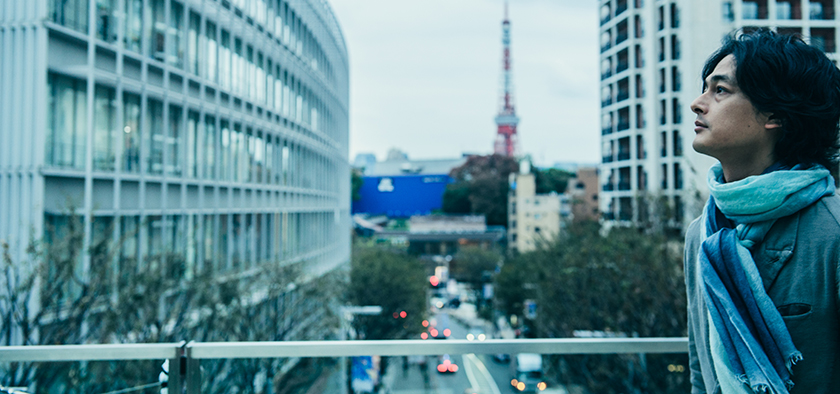
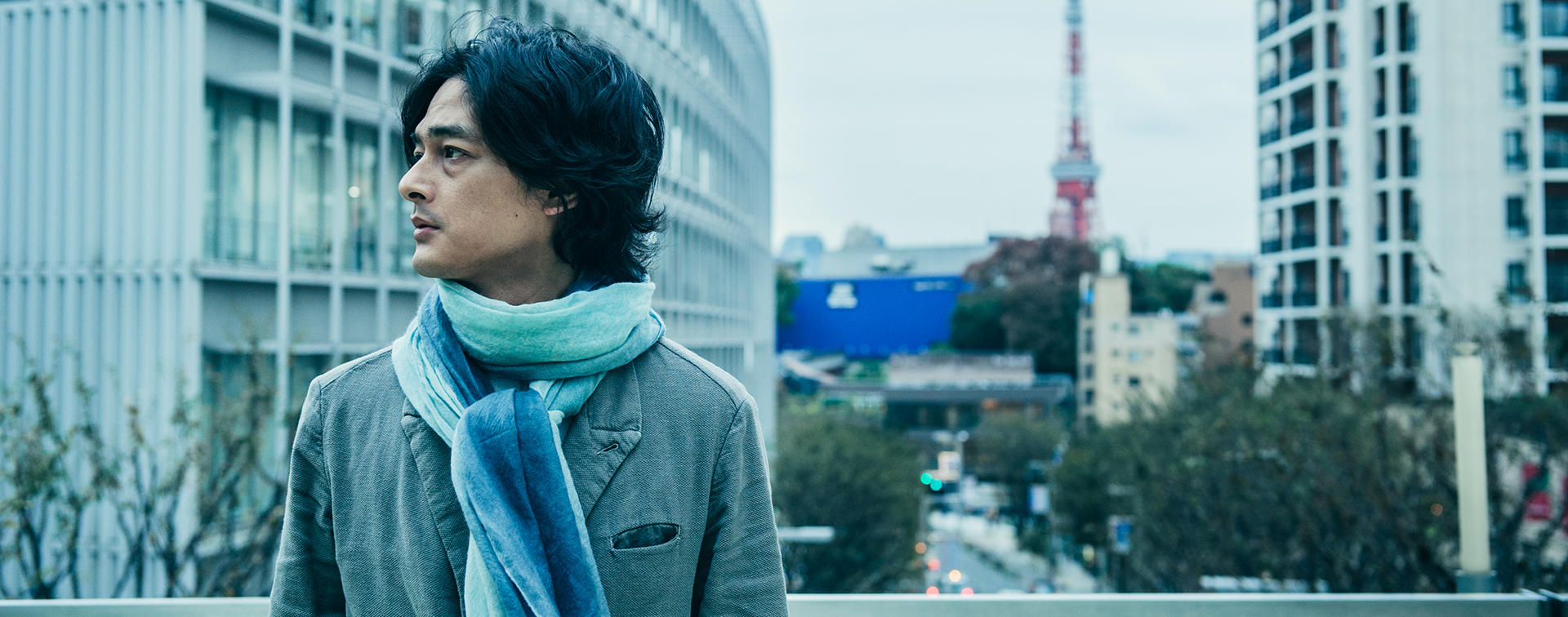
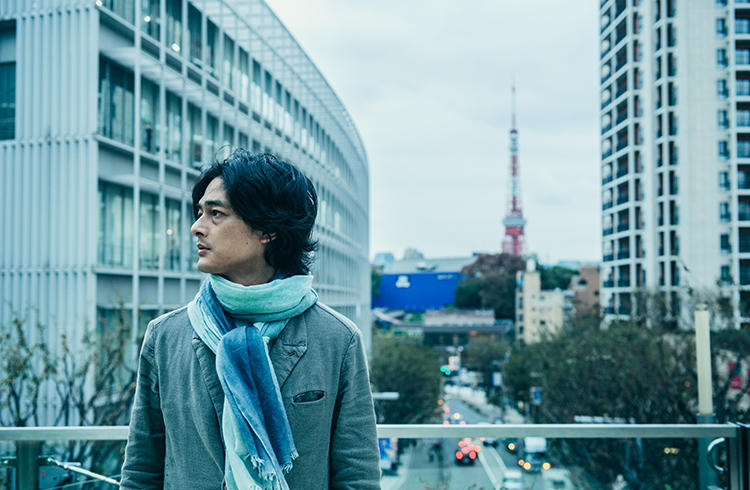
Experiences that slightly change one's perspective of place
Given new values to public and private spaces Projection mapping of flowers and the Niagara Falls
Ryotaro Muramatsu is head of production company NAKED which has undertaken numerous projection mapping events such as the "TOKYO HIKARI VISION" that drew 300,000 people in three days, as well as the event for an exhibition on traditional Kyoto folding screens and panels held at the Tokyo National Museum. Muramatsu works in many genres such as television, movies, advertisements, and music videos. The interview began in a way that we had not expected.
Solving the mystery of Roppongi
While I'm the one being interviewed, I would like to ask you a question. Could you please explain Roppongi to me? When you interviewed Michihiko Yanai-san, he came up with the idea of making "furusato (hometown)" badges, and he was saying that he feels Roppongi is a frightening place. I think I understand what he means. Yet on the other hand, Roppongi nowadays seems to be actively promoting itself as an area of design and art. I have so many questions I would like to ask you today such as "Which specific geographical area can be called Roppongi?" and "How come Akasaka is the address of Tokyo Midtown?"
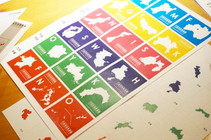
"Furusato" badges
In one of our "creator interviews", Michihiko Yanai had suggested distributing "furusato" (hometown) badges to visitors to Roppongi so that they could indicate the places they are from. We adopted his idea and made sticker badges printed with shapes of continentals and of prefectures in Japan. At Roppongi Art Night 2014, more than 13,000 of these badges were handed out to visitors.
Roppongi seems to be all kinds of things at once - a nighttime district, an area for design and art, and a place where rich people work and live and lead luxurious lifestyles. I'm not sure whether the blend of all these elements stirs a feeling of longing among the people who visit Roppongi, or whether it makes the place seems more inaccessible. It's something I've always wondered about - I wish I could solve the mystery of this place.
I get the impression that in Roppongi there is a smell of business - an atmosphere of an exclusive village, and it makes me feel a bit uneasy. I don't usually come to Roppongi because I don't know what to do here. I like places that feel comfortable, where the atmosphere is good - such as Yoyogi Uehara which is where my company is located. And this may sound trite, but as for places outside of Japan, I like Paris. It's difficult to explain why exactly I like a place - it's just the ambience.
Branded places that have a contrived atmosphere
There are places which are not very sophisticated and not at all chic, and are yet pleasant. One example would be the area around Meidai-mae station. Kichijoji used to be such a place too in the old days. I like places where the atmosphere doesn't seem contrived, and which don't make you feel as if you have to fit in. For example, Shimokitazawa is a place that makes me feel uncomfortable. It seems as if everyone is trying so hard to live up to the branded image of the place, and it tires me out.
Incidentally, I love resort areas. Resort areas are where people from all kinds of places gather, and most of the people there are not local residents. Maybe in such places it's not easy to form close relationships as in the countryside, but you can casually strike up a conversation with the foreigners that you meet. Come to think of it, Roppongi must also be like a resort area since it has many outside visitors.
Perhaps I feel uneasy in Roppongi because the way they're branding the place seems somewhat pushy to me. I guess this is partly due to the fact that I myself do work that involves sending messages to people. I can't help thinking about what goes on behind the scenes, and when I detect hints of the strategic measures being taken, I feel put off. Gosh, I hope you don't mind me saying such negative things.
The need for subtlety in experience-based events
The events which my company organizes are what are known as experience-based events. Experience is something you go through by using your physical senses, and I don't like to be pushy about it. I mean, if somebody said to you, "Here is an experience for you" or "Let's go and have a little experience", you don't feel exactly thrilled, do you?
A while ago, we did an event called "Night Aquarium" at Enoshima Aquarium. With projection mapping, we made the rocks seem to move as soon as visitors entered the aquarium. Then when they turned the corner at the end of the corridor, visitors would see images of water overflowing from the water tanks. The water was made to look like waves on the beach; we wanted people to look at the waves and feel the urge to play in the surf. And then when they walked further on, they would suddenly be approached by sea sparkle.
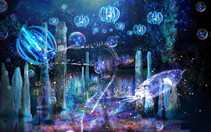
Night Aquarium
A projection mapping event held at Enoshima Aquarium held from July to November 2014. Images of the deep sea were projected onto huge tanks filled with fish taken from the Sagami Bay. There were interactive features such as images of water waves moving in tandem with people's movements.
The movements of the visitors were picked up by sensors and all the images appeared in response to their body movements. The effect was natural, and made for an interesting experience with an element of surprise. Experience-based events that use projection mapping often lack subtlety. It's like "Please stand in this spot, and then hold up your hand over this device. Now you can see the fish coming near you." And you think, "Well, that's no surprise." (laughs) To me, events like that where people are required to think and take action in order for something to happen, are not really about experience. And I get annoyed when such things are called works of technology and art.

The illusionary nature of projection mapping
I don't undertake projects in a logical way; I make up the logic later. (laughs) I start by looking at something and thinking, "That's nice." For example, with "CITY LIGHT FANTASIA", I began by thinking about how everyone likes Tokyo Tower and the nightscape. And it was odd that while people around me were all saying that Tokyo Tower is marvelous, no one had actually gone up the tower recently. With "NIHONBASHI ILLUMINATIONS", the concept was born from my desire to create a sort of secret garden - I wanted to do a new kind of flower-related event that people would have to come to the city to see.
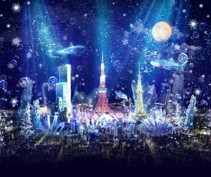
CITY LIGHT FANTASIA by NAKED
A 3D projection mapping event that projects fantastical images against the glass windows of observatories. The popular event has drawn 300,000 visitors. It is currently being held at large observatory towers across Japan. The event at Tokyo Tower will be on until April 3, 2016.
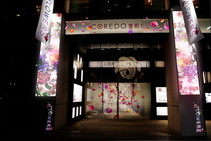
NIHONBASHI ILLUMINATIONS collaborated with FLOWERS
An illumination show designed by NAKED held in the Nihonbashi area until February 11, 2016. Images of springtime flowers are being projected at the commercial complexes of Coredo Muromachi, Coredo Nihonbashi and Mitsui Honkan, The flowers gradually bloom as the days go by. From January 8 to February 11, the "FLOWERS BY NAKED" event at the Nihonbashi Mitsui Hall will be an event that combines flower arrangements with digital art.
Projection mapping and illuminations are about optical illusions. At these events we are essentially saying to the audience, "If you change your perspective slightly, what you see in front of you might begin to look like something else." And by blending a different element to the usual night scenery, we can create things that people find charming.
Projection mapping makes use of things that already exist like Tokyo Tower or the nightscape or the streets of Tokyo. All these things have always been here but we attempt to give them different values. When people tell me about their fondness for Tokyo Tower or how lovely the nightscape was, I feel happier than being told that the projection mapping was great. Such comments make me feel that I succeeded in conveying the significance and attractiveness of a place.
Contemplating the distinctive appeal of each place
An event is ultimately dependent on the locality. Holding an event means collaborating with the place. Whether the venue is Tokyo station, or an aquarium, or Tokyo Tower, an event is held in a real, physical place. There would be no point in projecting the same images that were projected on the building at Tokyo Station onto a local government building in say, Higashimurayama. It's important that we carefully contemplate what the distinctive appeal of each place is.
When planning events, I take different factors into account and then mix them up as in a juicer. I think about the location such as Tokyo station for example, and the buildings there, and the atmosphere of the place or the time of season, or the feelings I happen to have at the time. What I produce is the result of throwing in and jumbling all the elements together. If the venue is a place I don't like, I ask myself what can be done to make it appealing.
I've been drawn to very different types of women. I like a woman who emanates her unique attractiveness in a pleasing way, and I'm not a picky guy. I take a similar approach in my work. (laughs)
I never explain my works to people. I want people to make their own interpretations of my works. Maybe some people will think they are art, while others will think they are events, or perhaps even commercial products. I leave it to the viewers to look at them as they like.
Expanding on the things that already exist
As a matter of fact, I don't really think that the work we are doing is about projection mapping or illuminations. We use these commonly used terms because they are easy to understand, but for me, CITY LIGHT FANTASIA is a new nighttime experience while FLOWERS is at heart, an event to enjoy flowers. I think it's too simplistic to give the label "experience-based event" to any event that combines images and sensors with the latest technology. It's more fun for me to think about how we could use what already exists such as night scenes and flowers and expand those worlds a little.
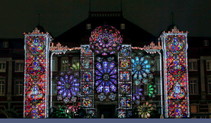
TOKYO HIKARI VISION
A projection mapping event held at "Tokyo Michiterasu" in December 2012, using the Marunouchi Station Building at Tokyo Station. Depicted a trip around the world, the 10-minute show attracted more than 300,000 visitors and generated much talk.
Projection mapping involves a lot of technology and it was originally a genre for programmers and media artists. I'm a film person, and what I did was to create shows lasting 10 minutes or more incorporating the cathartic effect of movies. Because the projection mapping at Tokyo Station generated a lot of talk, people in Japan think that this is what I've always done, but it's not.
Having said that, I wish to pursue the potential of projection mapping and I hope that one of these days I will be able to do a show that could be held in a hall charging admission fees. I often refer to Cirque du Soleil in talking about my work. When people go to a Cirque du Soleil show, they don't say they are going to the circus. That show has evolved into something different. I always have an inner desire to do something like that - to create a new form of entertainment.
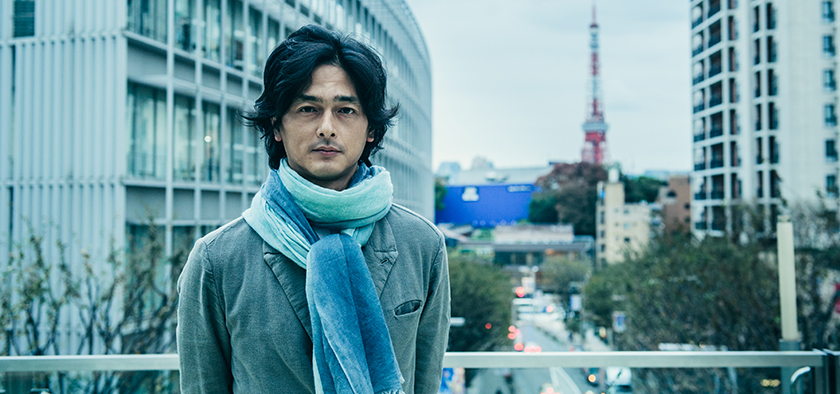
A "waterfall" for TV Asahi, a "flower garden" for Tokyo Midtown
An idea I've had for a long time is to use projection mapping to turn the glass-paned building of TV Asahi into the Niagara Falls. On a summer night, it would look so cool and refreshing to see the water falling from above and splashing into the waterfall basin. The shape of that building reminds me so much of the Niagara Falls. (laughs)
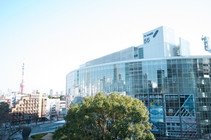
TV Asahi building
In 2003, TV Asahi moved its headquarters from Ark Hills to Roppongi Hills. The glass-paned building of TV Asahi, which is integrated with the adjacent Mohri Garden, was designed by world-renowned architect Fumihiko Maki, recipient of the Pritzker Architecture Prize.
At Tokyo Midtown, there are bamboo trees inside the building, and there is the lawn outside, so it might be a good idea to have a flower-themed event. A secret garden in the middle of Tokyo - a concept like that would pique people's curiosity, wouldn't it? It would be interesting if it could be more than the normal event - if all the shops in Tokyo Midtown could participate and make the whole area the best place in Tokyo to enjoy flowers. Perhaps we could have a "secret garden" projection mapping from January to March before April when the real flowers start blooming - that would be a lovely concept.
Aside from show-like things, something could be done to connect places like the Roppongi Crossing, Roppongi Hills and Tokyo Midtown. Projection mapping can be used not only in the streets but also in personal spaces. We once did projection mapping at the BREATH HOTEL in the Shonan area, in a room that had no windows. Perhaps we could do projection mapping in a bathroom or a tea ceremony room.
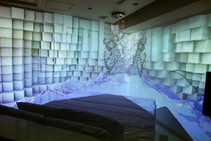
BREATH HOTEL
A hotel at the resort spot of Kugenuma Kaigan in the Shonan area with a good view of the sea. For the sole windowless room at the hotel, Muramatsu designed a two and a half-minute projection mapping show called "Secret Paradise."
Being sensitive to atmosphere and feelings
A little while ago, when planning events, everyone was talking about the importance of the point of view, but that concept has become stale. Now it's more important to have the ability to perceive the atmosphere or the feelings of the times. The words we use to describe our events may be common like "fantastical" and "lights" but I think the challenge is to give shape to those words in unexpected ways that capture people's imagination.
But since that is abstract and difficult to understand, we add adjectives to practical words and say for example, that we are going to make a "fantastical 360 degree projection mapping". (laughs) You need to use words which make it easy to visualize. The word "fantastical" invokes the ambience, and "360 degree projection mapping" makes people think "Wow!" so that when they hear the combination of these words, they think, "I'm not sure what it would look like but it does sound interesting." So we don't need detailed points of view or any twists. We live in an age when people express themselves by using images such as LINE stamps, so perhaps we don't even need to use words.
It's so easy to present difficult things in a difficult way. On the other hand, it requires so much to make things that are profound and at the same time easy to understand. In order to express the pure essence of intangible things like "atmosphere" and "feelings", you need to be observant - to watch carefully. Instead of thinking about yourself and devising strategies, you need to just simply look at what is in front of you. That's why I wish to look at Roppongi; it's precisely because I don't know about the area that I wish to observe and understand.
The appeal of a place with its own true personality
In recent years, there have been many attempts to use art to revitalize the various regions in Japan, but if all the towns became art towns, they would lose their individuality, don't you think? It's the same with illuminations. If there was a custom for everyone to decorate their homes with lights, there would be no point in holding big illumination events at commercial facilities. Putting up lights will become the same as putting up "kadomatsu" (traditional New Year decorations for the front of the home), although that might be a nice custom.
Going back to what I said earlier, if Roppongi is indeed a "frightening place", then I think you need to first accept that fact. You shouldn't ignore it and try to create a completely new area. It's better to accept that Roppongi does have this frightening image and then from there, you can try incorporating design and art. Brooklyn became a cool town based on the downtown atmosphere that it originally had. A place cannot become really appealing unless it has its own true personality. And I think people are now beginning to reassess the value of things that are authentic.
I don't know much about Roppongi, so I have no right to say what kind of area Roppongi should be. I don't want to make presumptions so I would like to get to know this place properly. I hope I can learn more and get to the point where I can say, "Alright, I get it." Perhaps by that time, I will be really in love with the place - that is certainly possible. (laughs)
Editor's thoughts
During the interview, Muramatsu-san kept asking us questions. "Is Roppongi a popular place?" "Does Roppongi Art Night get really lively?" "What do you think is the difference between the chaos in Roppongi and the chaos in Shinjuku?" Muramatsu-san, who told us that he likes chaos, works in so many different genres, and I couldn't help thinking that he and Roppongi have some things in common.(edit_kentaro inoue)




